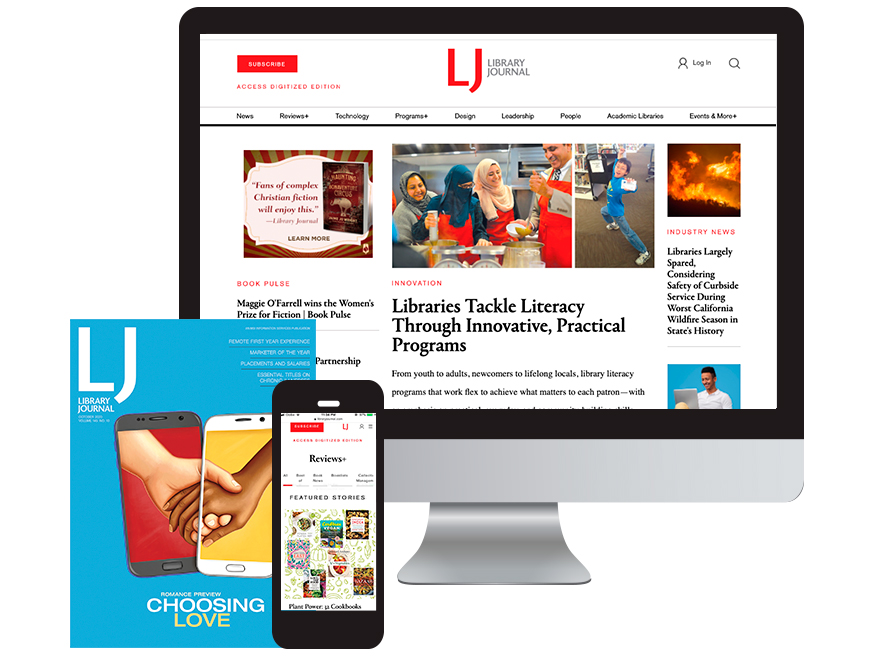Sarah Bayliss
9 Articles
Last 30 days
Last 6 months
Last 12 months
Last 24 months
Specific Dates
From:
To:
Capitol Designs: DCPL's Ambitious Construction Project | Library by Design
A renaissance in library architecture is under way in Washington, DC, thanks to the vision of District of Columbia Public Library (DCPL) chief librarian and executive director Ginnie Cooper. Since she arrived at DCPL in 2006, Cooper has overseen the construction and renovation of 14 branch libraries, with eight more renovations and reconstructions to go. Collectively, the upgraded branches and new buildings—the latter conceived by world-class architects, including Adjaye Associates, Davis Brody Bond Aedas, and the Freelon Group—have earned an astonishing 26 awards for their design excellence.
Up Close: Giving the People What They Want at Cuyahoga County Public Library, OH | Library by Design
“It’s the largest investment in our 90-year history,” says Sari Feldman about Ohio’s Cuyahoga County Public Library (CCPL) plan to renovate or rebuild 18 of its 28 branches. The $110 million spate of rebuilding, led by executive director Feldman and detailed in CCPL’s Facilities Master Plan, will create new and updated library facilities that the library says will save CCPL $4 million a year. Those savings are particularly meaningful, because since 2008 CCPL’s revenues have dropped by $14.9 million owing to state budget cuts, and since 2009 property tax revenues declined by $7 million.
Up Close: Bright Lights, Gig City in Chattanooga | Library by Design
For Chattanooga, having a gigabit-per-second connection means an opportunity to attract new business. The city is even sponsoring a competition in which entrepreneurs with winning ideas receive financial incentives to move to Chattanooga. Similarly, Director Corinne Hill, along with CPL’s new assistant director for technology and digital initiatives Nate Hill, hopes to turn the library into a creative hub that will include a competitive art and technology residency program, drawing cutting-edge talent to the library and its community.
Looking to Apple for Tech Lab Inspiration | Library by Design, Fall 2012
Challenge: How to turn an ornately designed, inconveniently shaped basement into a sleek, technology-driven community space? This was the question that Bostwick Design Partnership faced when taking on the task of creating TechCentral, Cleveland Public Library’s new technology center on the lower level of the library’s downtown Louis Stokes Wing.
Case Study: How Social Media Built a Library | Library by Design, Spring 2012
In fall 2009, Bing Thom Architects (BTA) won a stimulus grant from the Canadian government to build the new $36 million (Canadian), 77,000 square foot Surrey City Centre Library, envisioned as a centerpiece of this fast-growing community outside Vancouver, BC. The caveat: use it or lose it. In exchange for the funding, construction had to be finished in 18 months—half the usual time allowed for such a project. “We got the grant in November and started working in December,” says Michael Heeney, principal at the Vancouver-based BTA. “By February, we were under construction.” The accelerated schedule meant there was no time to conduct essential public meetings and focus groups to find out what the community wanted from their new library. BTA’s solution: use social media.
Case Study: The Small Steps You Can Take Toward Your Library Building Future | Library by Design, Spring 2012
When Mary Hougland took over as director of the Jennings County Public Library in rural North Vernon, IN, in January 2008, she wanted to turn the nearly 34,000 square foot, modern pole barn structure, a characterless building erected in 1997, into a “user-friendly” destination that would be “someplace where people wanted to hang out.”
Case Study: Exceptional Lighting Turns a Library Inside Out | Library by Design, Spring 2012
The goal of the new Tenley-Friendship Neighborhood Library in Washington, DC, which opened in January 2011, was to give neighborhood residents a “grand, well-lit, inviting” place—a “fantastic library where people would want to spend time,” says Kim Fuller, District of Columbia Public Library’s (DCPL) project manager, who oversaw the library’s construction.
ALREADY A SUBSCRIBER? LOG IN
We are currently offering this content for free. Sign up now to activate your personal profile, where you can save articles for future viewing










